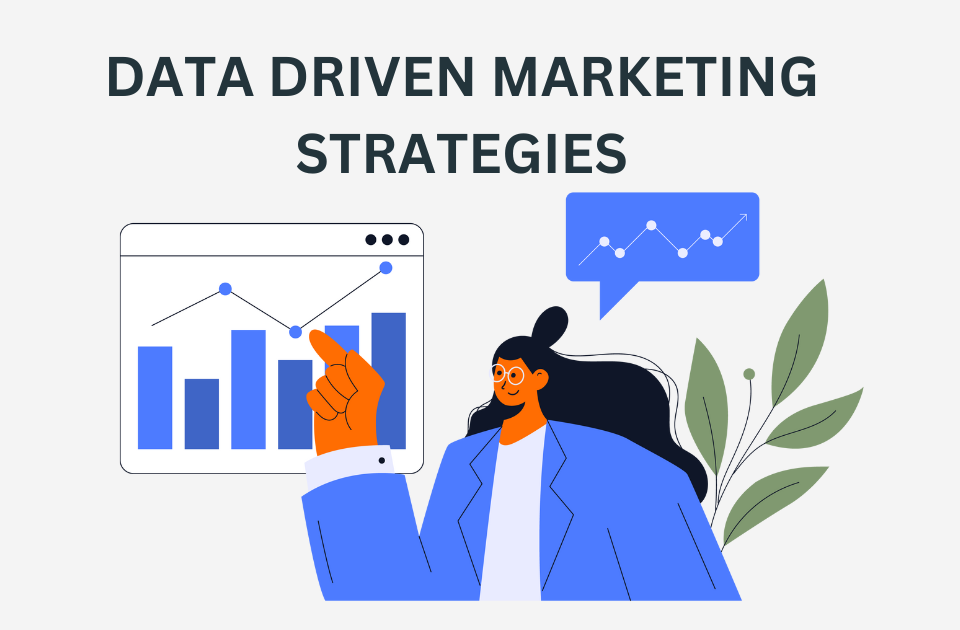In today’s digital whirlwind, establishing and nurturing brand visibility is not just advantageous—it’s essential for survival and growth. It’s the very breath that keeps your brand alive amid relentless competition. But sticking to old playbook moves won’t cut it as the digital landscape morphs with lightning speed. It’s time to pivot, innovate, and redefine what top-of-funnel marketing means for your business.
Top-of-funnel marketing is your first handshake with potential customers, many of whom might not even know your brand exists.
This narrative unfolds the top ten funnel marketing strategies that are not merely about making your brand seen but ensuring it sticks. These tactics go beyond superficial engagement; they’re about forging connections, stirring emotions, and embedding your brand into the consciousness of your ICPs.
In this article, we’ll go through methods that promise not just visibility but a lasting impact in the minds and hearts of your prospective customers.
Top-of-the-Funnel (TOFU) Marketing: A Technical Overview
TOFU marketing focuses on increasing brand visibility and initiating the user journey from awareness to conversion. It’s the critical first step in expanding your Total Addressable Market (TAM) by attracting and engaging potential leads who may need to become familiar with your products or services. Here’s a breakdown of crucial TOFU strategies:
1. Content Strategy:
Objective: Educate, inform, and engage a broad audience to increase brand awareness.
Execution: Publish informative blogs, engaging infographics, insightful whitepapers, and compelling videos that address general interests and pain points relevant to your industry.
Impact: Positions your brand as a thought leader, building trust and authority among potential customers.
2. Search Engine Optimization (SEO):
Objective: Enhance online visibility to ensure your content is easily discoverable by potential customers.
Execution: Optimize content with targeted keywords, focusing on long-tail phrases that capture early-stage search intent. Improve technical SEO to boost website performance and user experience.
Impact: Increases organic traffic, making your brand a go-to resource for information in your industry.
3. Social Media Marketing:
Objective: Leverage social platforms to expand reach and engage a broader audience.
Execution: Share valuable content, engage in conversations, and use targeted hashtags to increase visibility. Implement social listening to understand audience needs and preferences.
Impact: Builds community, enhances brand recognition, and fosters relationships with potential customers.
4. Email Marketing:
Objective: Nurture leads by providing consistent value through email communications.
Execution: Develop an opt-in strategy to gather email addresses. Send regular newsletters, industry insights, and personalized content to educate subscribers and keep your brand in mind.
Impact: Gradually move potential customers down the funnel by maintaining engagement and interest.
5. Lead Magnets and Landing Pages:
Objective: Convert website visitors into leads by offering valuable resources in exchange for contact information.
Execution: Create high-value lead magnets (e.g., free guides webinar sign-ups) connected to optimized landing pages that encourage visitors to submit their contact details.
Impact: Increases lead generation by capturing information from interested prospects.
6. Analytics and Optimization:
Objective: Continuously improve TOFU marketing efforts by analyzing performance and optimizing strategies.
Execution: Use analytics tools to track engagement, conversion rates, and other key performance indicators (KPIs). Implement A/B testing to refine messaging, content, and campaign tactics.
Impact: Enhances marketing efficiency, ensuring resources are allocated to the most effective strategies for brand awareness and lead generation.
TOFU marketing is about laying a solid foundation for brand growth by maximizing visibility, engaging with a broad audience, and starting the journey toward conversion optimization. By integrating these strategies, businesses can effectively address their TAM, nurturing potential leads into loyal customers.
Top 10 marketing strategies for TOFU
1. Advanced Marketing Automation:
Deep Dive: Beyond simplifying tasks, advanced automation integrates with CRM systems to create a unified view of the customer journey. It leverages AI to predict customer behaviors, enabling personalized campaign triggers based on specific actions or inactions.
Strategic Implementation: Segment your audience more granularly to deliver messages that resonate personally. Use predictive analytics to automate upselling and cross-selling opportunities at optimal times.
2. Mining Intent Signals for Precision Targeting:
Deep Dive: Intent signals encompass a range of behaviors, from content consumption patterns to social media interactions. Advanced tools and platforms now offer real-time intent data, providing insights into where a prospect is in the buying cycle.
Strategic Implementation: Develop dynamic content strategies that adapt to these signals. For example, if a user spends time on a product comparison page, follow up with a targeted email highlighting key features and customer testimonials.
3. Hyper personalization at Scale:
Deep Dive: Hyperpersonalization involves tailoring marketing messages and offers to individual consumers based on their unique preferences, behaviors, and previous interactions with the brand.
Strategic Implementation: Using machine learning models to analyze vast datasets for patterns and preferences enables personalized content delivery across channels. This could include customized landing pages based on the visitor’s profile.
4. Content Optimization for Clarity and Impact:
Deep Dive: With decreasing attention spans, content must immediately engage and convey value. This means optimizing not just for SEO but for readability, relevance, and emotional resonance.
Strategic Implementation: Refine content using tools like readability scores and sentiment analysis. Use data-driven insights to shorten paragraphs, incorporate bullet points for easier scanning, and intersperse with visuals that enhance the message.
5. SEO and SERP Evolution:
Deep Dive: SEO is no longer just about keywords but understanding and matching user intent. SERP features like People Also Ask, Featured Snippets, and Knowledge Panels offer new avenues for visibility.
Strategic Implementation: Optimize content to answer specific questions related to your niche. Use schema markup to enhance visibility in rich snippets and local SEO strategies to capitalize on geographical searches.
6. Behavioral Analytics for User Insight:
Deep Dive: Behavioral analytics extend beyond basic metrics to unveil deeper insights into how users interact with your brand across all touchpoints. This includes tracking micro-movements, scroll depths, and interaction heatmaps.
Strategic Implementation: Leverage these insights to streamline the user journey, removing friction points and optimizing conversion paths. Tailor content and calls-to-action (CTAs) based on user behavior trends.
7. Conversational AI for Real-time Engagement:
Deep Dive: AI-driven chatbots and virtual assistants can provide personalized interactions at Scale, guiding users through the buying process with conversational interfaces.
Strategic Implementation: Integrate chatbots with your CRM to offer personalized assistance based on the customer’s history. Use natural language processing to improve the bot’s understanding and responses, making interactions more human-like.
8. Exploiting Video Marketing Dynamics:
Deep Dive: Video marketing transcends product demos to include storytelling elements that resonate on an emotional level. Live streaming, interactive videos, and AR/VR experiences offer fresh ways to engage audiences.
Strategic Implementation: Create video content that aligns with user interests and the buyer’s journey stages. Use analytics to understand which video formats drive engagement and conversions, then iterate on successful formats.
9. Authentic Influencer Partnerships:
Deep Dive: Influencer marketing effectiveness hinges on authenticity and alignment between the influencer’s audience and the brand’s target customers. Micro-influencers, with their niche followings, often offer higher engagement rates.
Strategic Implementation: Identify influencers who share brand values. Collaborate on content that feels genuine and provides value to both your audiences.
10. Interactive Content for Engagement and Data Collection:
Deep Dive: Interactive content boosts engagement and provides valuable user preferences and behavior data. This can include quizzes, interactive infographics, and customizable product demos.
Strategic Implementation: Use interactive elements to segment users based on their responses, feeding this information into your CRM for more targeted follow-up campaigns. Measure engagement to refine and improve interactive content over time.
Marketing’s role in building TOFU
Lead Awareness and Engagement
Brand Visibility: Enhancing online presence through SEO and social media to increase brand discoverability.
Content Marketing: Creating valuable content to engage potential leads by addressing their needs and pain points.
Lead Generation Strategies
Inbound Marketing: Utilizing blogs, ebooks, and webinars to draw in leads by offering solutions to their problems.
Social Media Campaigns: Engage with potential customers on platforms where they spend their time to spark interest and encourage them to learn more about the brand.
SEO Optimization: Ensuring content ranks high on search engine results pages (SERPs) to attract organic traffic, a critical component of lead generation in TOFU.
Conversion Optimization at TOFU
Call-to-Action (CTA) Placement: Strategically placing CTAs within the content to guide users towards action.
Optimizing landing pages: Designing landing pages that are focused, user-friendly, and aligned with the specific interests of target audiences to improve conversion rates from initial visits.
A/B Testing: Continuously testing different elements of marketing campaigns to understand what works best in converting awareness into interest.
Analyzing TOFU Metrics
Traffic Analysis: Monitoring website and social media traffic to understand where leads are coming from and what content is most effective at attracting them.
Engagement Metrics: Evaluating social media interactions, content shares, and comments to gauge interest levels and refine engagement strategies.
Lead Quality Assessment: Using lead scoring systems to evaluate the potential of leads generated at the TOFU stage, ensuring marketing efforts are targeted effectively.
Integrating TOFU with Middle and Bottom Funnel Strategies
Lead Nurturing: Developing automated email sequences and targeted content strategies to move TOFU leads down the funnel.
Personalization: Utilizing data gathered during the TOFU stage to personalize interactions and content, increasing the relevance and effectiveness of marketing messages as leads progress through the funnel.
Marketing’s role in the TOFU is critical for setting the stage for successful lead generation and conversion optimization. By focusing on creating awareness, engaging with content, and optimizing for conversions right from the start, marketers can effectively guide potential customers through their journey, from initial awareness to eventual conversion. This requires understanding your ICPs, a strategic approach to content and SEO, and a commitment to analyzing and refining tactics based on performance metrics.





